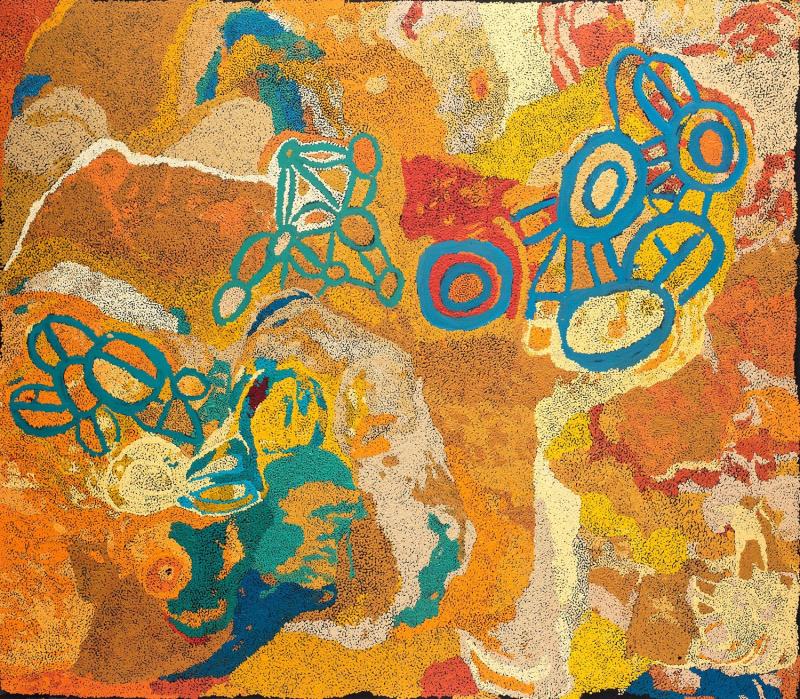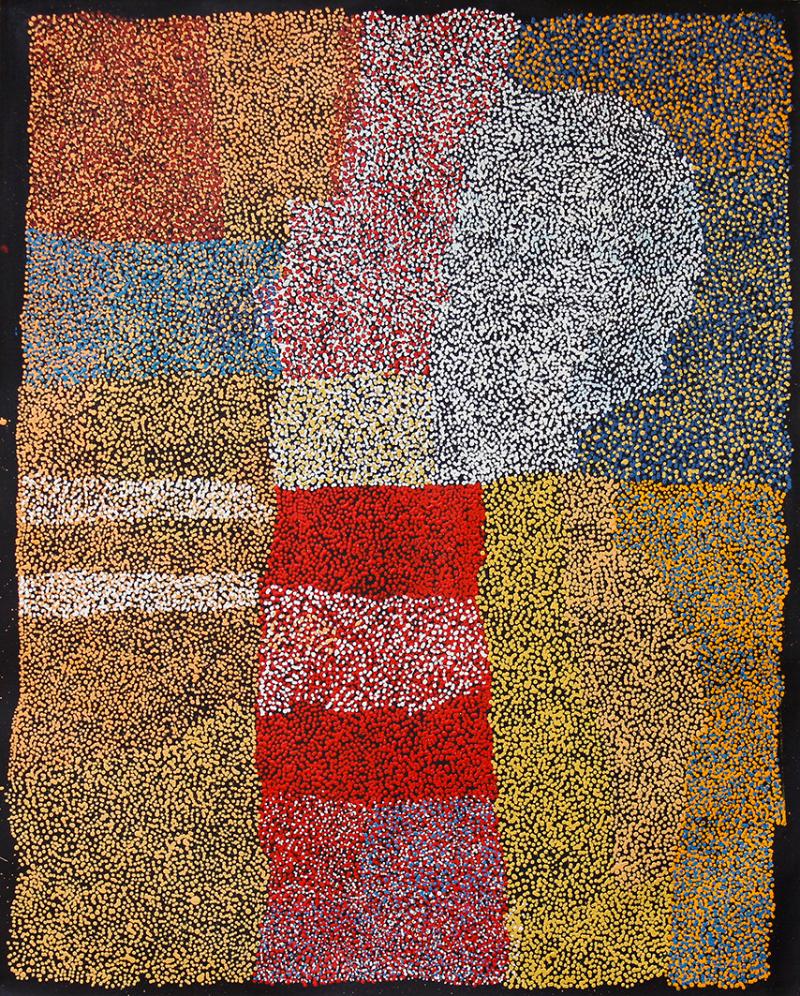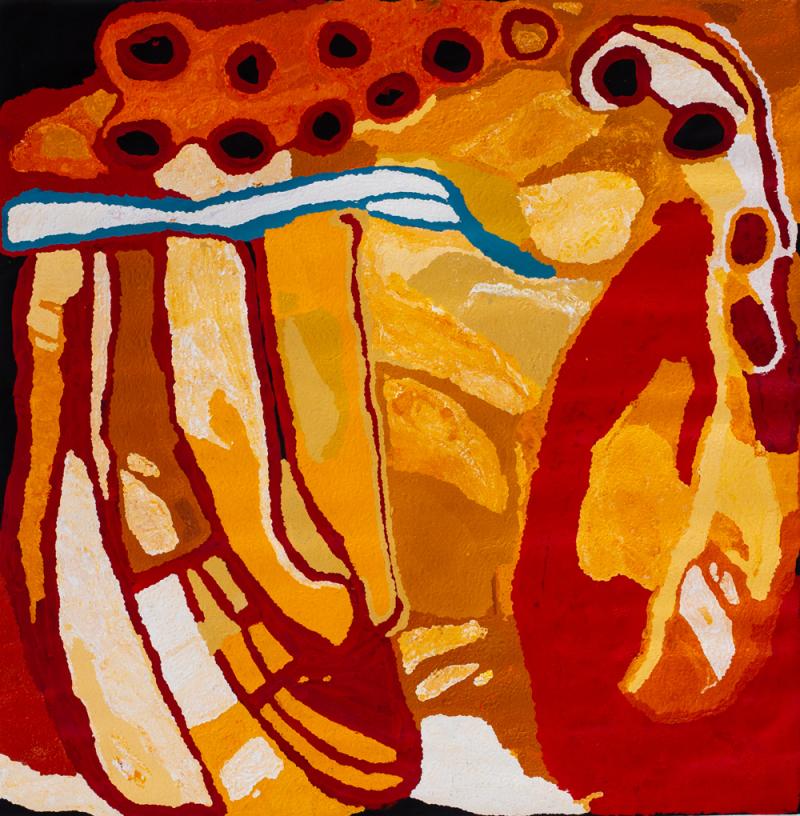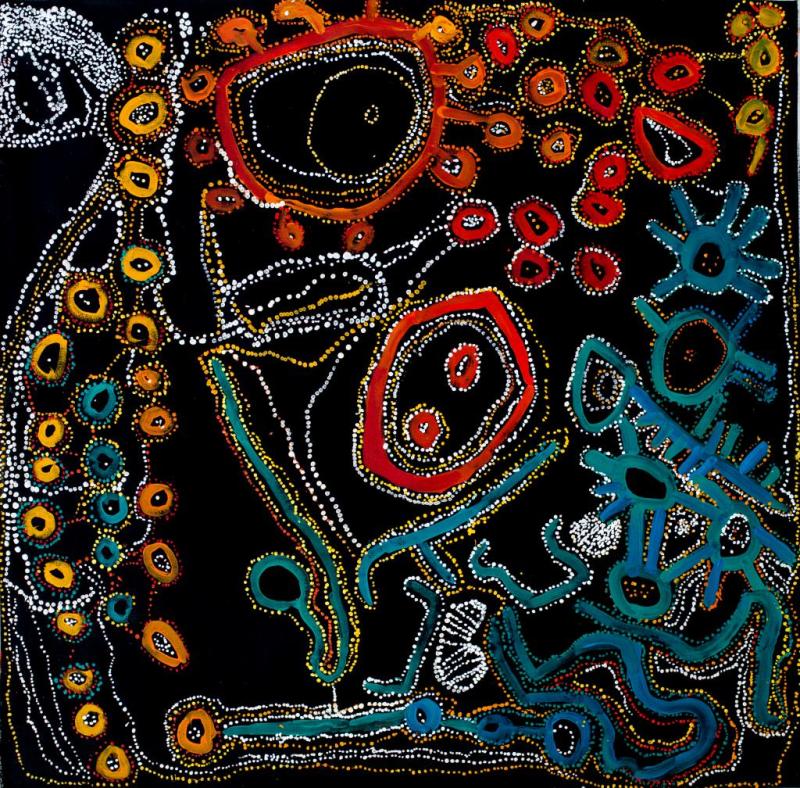New Gift of Castillo-Brown Collection Expands Kluge-Ruhe
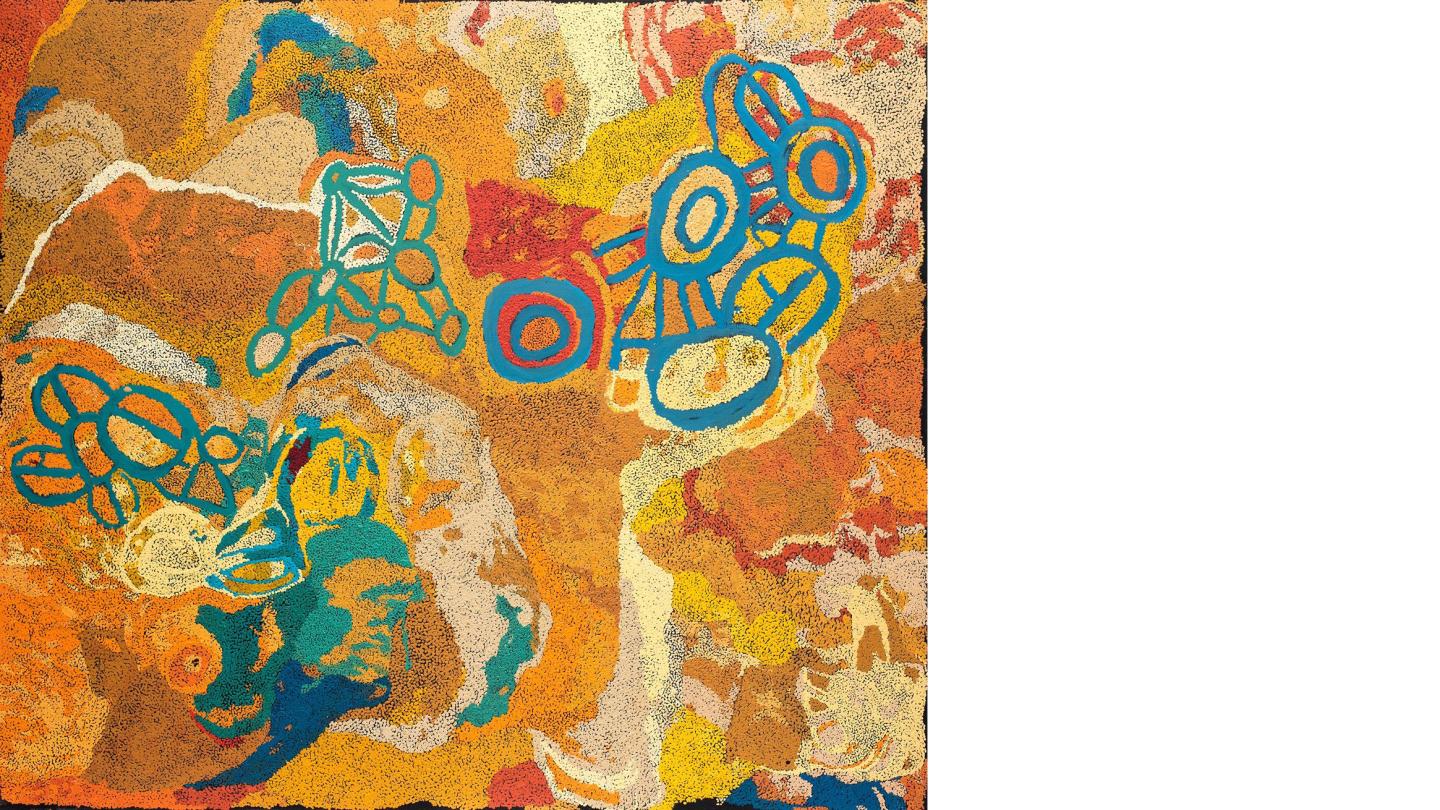
We are excited to announce the donation by Professor Greg Castillo and his partner Gary Brown of over 35 paintings from their private collection to Kluge-Ruhe! The paintings were all produced from 2002-2022 at Spinifex Arts Project. This multi-year gift will help Kluge-Ruhe tell the continuing story of the world's greatest contemporary art movement.
This is a truly transformative gift, adding depth to an area currently unrepresented in the Kluge-Ruhe collection.
– Henry Skerritt, Curator at Kluge-Ruhe
About Spinifex Arts Project
Spinifex Arts Project is located in the remote desert community of Tjuntjutjara and was established in 1997 as part of the Native Title documentation process. Spinifex people were forced out of the Great Victoria Desert in the 1950s by nuclear testing. They returned to their homelands in the 1980s and, spurred on by the Mabo decision of 1992, mounted a Native Title claim for 20,000 square miles of their desert Country.
This [donation] is important, and we are happy that many people can learn and see our culture through our paintings. They like these ones.
– Lennard Walker, Spinifex artist and elder
About Greg Castillo
Greg Castillo (right) is a professor of Architectural History at University of California Berkeley, where he specializes in the architectural history of Interwar and Postwar America and Europe. He discovered Aboriginal Australian art while teaching architectural history at the University of Sydney. As an art historian, he is very interested in how artists develop over time and he published an article titled "Spinifex People as Cold War Moderns." He has carefully collected multiple works by individual artists to show the trajectory of their careers.
The historical resilience of the Spinifex people and their generosity in sharing their knowledge and experience turned me into a collector. While teaching at the University of Sydney and doing historical research on cold war culture, I became interested in Aboriginal contemporary art. Those interests overlapped in the story of how the Australian government exiled Spinifex people from their homelands in order to create an atomic bomb testing site, and how they reclaimed their territory generations later. While visiting a Sydney gallery I asked to see Spinifex work and, amazingly, the gallerist discovered an uncatalogued painting that had been gathering dust in the stockroom for nearly a decade. It was love at first sight, and I was hooked.
– Greg Castillo
Read Greg Castillo's Article
Aboriginal Australian contemporary artists create works that express indigenous traditions as well as the unprecedented conditions of global modernity. This is especially true for the founders of the Spinifex Arts Project, a collective established in 1997 to create so-called “government paintings”: the large-scale canvases produced as documents of land tenure used in negotiations with the government of Western Australia to reclaim expropriated desert homelands.
